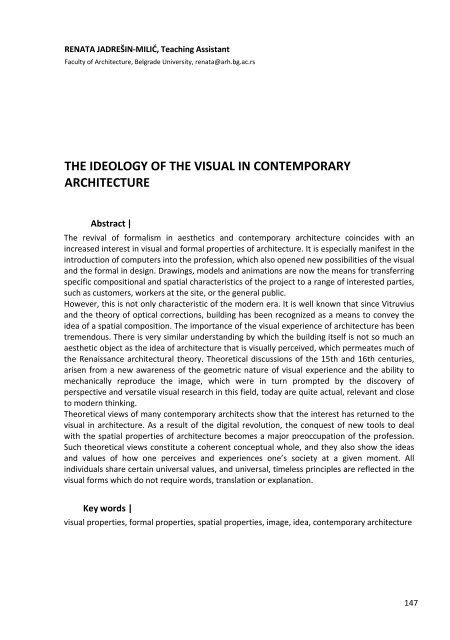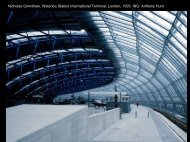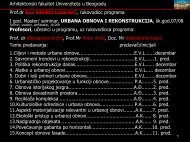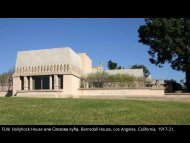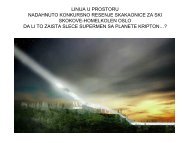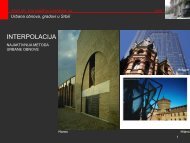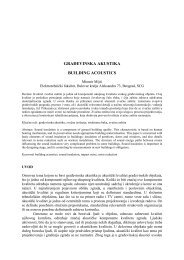Architecture and Ideology
Architecture and Ideology
Architecture and Ideology
You also want an ePaper? Increase the reach of your titles
YUMPU automatically turns print PDFs into web optimized ePapers that Google loves.
RENATA JADREŠIN‐MILIĆ, Teaching Assistant<br />
Faculty of <strong>Architecture</strong>, Belgrade University, renata@arh.bg.ac.rs<br />
THE IDEOLOGY OF THE VISUAL IN CONTEMPORARY<br />
ARCHITECTURE<br />
Abstract |<br />
The revival of formalism in aesthetics <strong>and</strong> contemporary architecture coincides with an<br />
increased interest in visual <strong>and</strong> formal properties of architecture. It is especially manifest in the<br />
introduction of computers into the profession, which also opened new possibilities of the visual<br />
<strong>and</strong> the formal in design. Drawings, models <strong>and</strong> animations are now the means for transferring<br />
specific compositional <strong>and</strong> spatial characteristics of the project to a range of interested parties,<br />
such as customers, workers at the site, or the general public.<br />
However, this is not only characteristic of the modern era. It is well known that since Vitruvius<br />
<strong>and</strong> the theory of optical corrections, building has been recognized as a means to convey the<br />
idea of a spatial composition. The importance of the visual experience of architecture has been<br />
tremendous. There is very similar underst<strong>and</strong>ing by which the building itself is not so much an<br />
aesthetic object as the idea of architecture that is visually perceived, which permeates much of<br />
the Renaissance architectural theory. Theoretical discussions of the 15th <strong>and</strong> 16th centuries,<br />
arisen from a new awareness of the geometric nature of visual experience <strong>and</strong> the ability to<br />
mechanically reproduce the image, which were in turn prompted by the discovery of<br />
perspective <strong>and</strong> versatile visual research in this field, today are quite actual, relevant <strong>and</strong> close<br />
to modern thinking.<br />
Theoretical views of many contemporary architects show that the interest has returned to the<br />
visual in architecture. As a result of the digital revolution, the conquest of new tools to deal<br />
with the spatial properties of architecture becomes a major preoccupation of the profession.<br />
Such theoretical views constitute a coherent conceptual whole, <strong>and</strong> they also show the ideas<br />
<strong>and</strong> values of how one perceives <strong>and</strong> experiences one’s society at a given moment. All<br />
individuals share certain universal values, <strong>and</strong> universal, timeless principles are reflected in the<br />
visual forms which do not require words, translation or explanation.<br />
Key words |<br />
visual properties, formal properties, spatial properties, image, idea, contemporary architecture<br />
147


